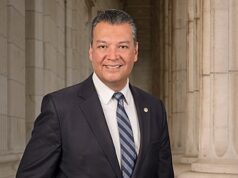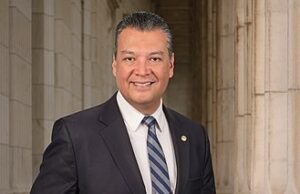GSA Administrator Carnahan, Secretary Granholm, Elected Officials Highlight Climate and Job Investments in Build Back Better Act, Bipartisan Infrastructure Deal
GSA-DOE spotlight programs to spur clean energy industries, reduce greenhouse gas emissions
NEW CARROLLTON (MD) – RealEstateRama – GSA Administrator Robin Carnahan, Secretary of Energy Jennifer Granholm, House Majority Leader Steny Hoyer, Mayor Phelecia Nembhard, and County Executive Angela Alsobrooks held a press availability to underscore how the Bipartisan Infrastructure Law and the Build Back Better Act will create jobs and reduce greenhouse gas emissions in communities nationwide.
Extensive efficiency upgrades at the New Carrollton Federal Building reduced energy use by more than 60%, cut greenhouse gas emissions by 20,000 metric tons annually, and saved $2.5 million in annual operating costs. The project is an example of the kinds of investments that the Build Back Better Act will make possible in federal buildings across the country, contributing to the Biden-Harris administration’s goal of net zero emissions nationwide by 2050.
“This facility is a prime example of how the federal government can begin leading the way toward a clean energy future,” said GSA Administrator Carnahan. “Through the Build Back Better Act, we can deliver sustainable public buildings in communities across the country, creating thousands of good-paying jobs, saving taxpayers money, and spurring next-generation clean energy industries that will help cut greenhouse gas emissions.”
“President Biden has set out the most ambitious climate goals of any administration—slashing our carbon pollution in half by the end of the decade, getting to 100% clean electricity by 2035, and reaching net zero by 2050,” said Secretary Granholm. “This administration is moving at lightning speed to achieve those goals nationwide, but we also need to walk the walk ourselves. That’s why we’re using a whole-of-government approach to cut the carbon footprint of the government itself, and this site is a perfect example of what happens when we do.”
“I was proud to stand with federal and local partners in front of the IRS New Carrollton Headquarters in Prince George’s County today and draw attention to our efforts in Maryland to build innovative and sustainable infrastructure,” said House Majority Leader Hoyer. “Still, there is more to be done to make our state more climate resilient, more competitive, and provide more opportunities for hardworking Marylanders to get ahead. That is why President Biden and Congressional Democrats’ Build Back Better Agenda is so important.”
“Prince George’s County has been working to lead the way in clean energy, from investing in sustainable County buildings and vehicles to prioritizing transit-oriented development in our economic development strategy,” said Prince George’s County Executive Angela Alsobrooks. “Areas like New Carrollton, where we are working to build a walkable, sustainable community with access to jobs, amenities and transit, are an excellent example of how we can improve the quality of life for our residents while reducing greenhouse gas emissions. The Bipartisan Infrastructure Law and the Build Back Better Act will help communities like ours further invest in clean energy, new jobs, and so much more for our residents.”
The Build Back Better Act would be the single largest investment in combating climate change in U.S. history and would enable even more of America’s public buildings to be sustainable and more cost-efficient. The bill that passed the House of Representatives includes funding for GSA to purchase low-carbon materials and test next-generation clean energy technologies. The Build Back Better Act will also accelerate the move to electrify the federal fleet by allowing GSA to procure approximately 98,000 zero emission vehicles and install 49,000 charging stations across the country.
Secretary Granholm and Administrator Carnahan also highlighted their joint efforts to maximize the climate investments in the Bipartisan Infrastructure Law and Build Back Better:
- Green Proving Ground: GSA and DOE recently issued a Request for Information for the next-generation of emerging technologies that help reduce greenhouse gas emissions from commercial buildings.
- Grid-Interactive Buildings: Earlier this year, GSA, with support from, DOE’s National Renewable Energy Laboratory (NREL) published a blueprint for integrating grid-interactive technologies into building renovation and improvement projects, particularly using federal energy savings performance contracts.
- New Facility Standards: GSA also announced that it has updated its facility design standard (known as the P100) to require new and major renovations to be net zero ready, or designed to be ultra-efficient with the goal of achieving net-zero energy. P100 also requires climate resiliency, a careful look at embodied carbon, and an 80% reduction in fossil fuel.
DOE’s fact sheet on the Bipartisan Infrastructure Law is available here. Additional photos and videos are available upon request.
###
About GSA: GSA provides centralized procurement for the federal government, managing a nationwide real estate portfolio of more than 370 million rentable square feet and overseeing approximately $75 billion in annual contracts. GSA’s mission is to deliver the best value in real estate, acquisition, and technology services across government, in support of the Biden-Harris Administration’s priorities. For more information, visit GSA.gov and follow us at @USGSA.














